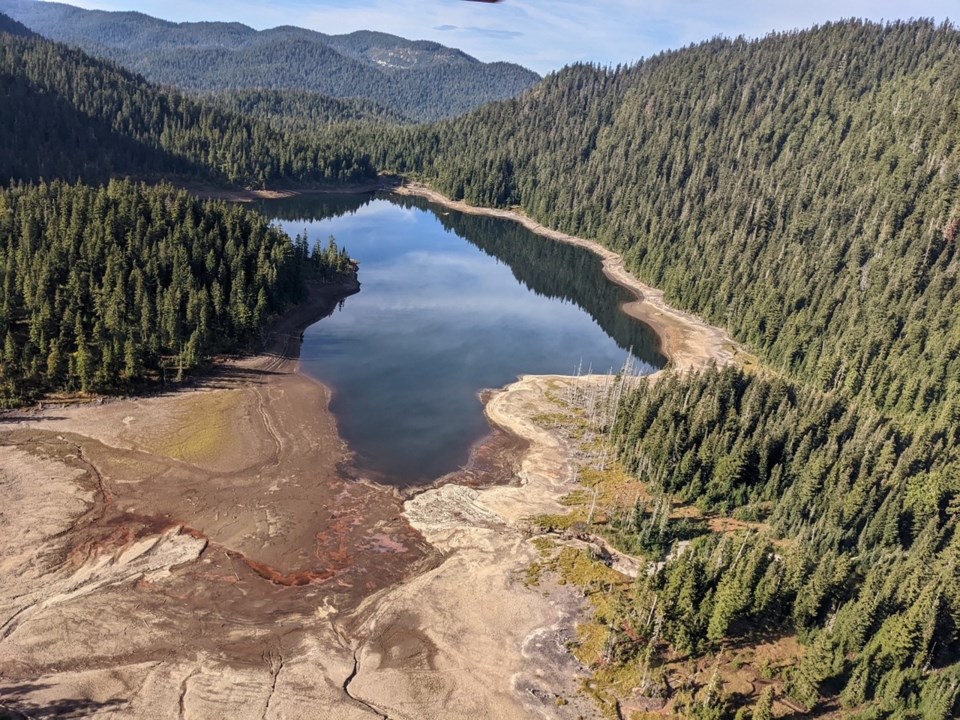As overnight temperatures dip to single digits in Coast communities, they hover near the freezing mark at Chapman and Edwards Lake. That’s a supply concern for the already stressed Chapman water system. Water being siphoned from the lakes accounts for 66 per cent of the system's current volume. But that equipment has not be tested in icing conditions, according to the water supply update provided to the Sunshine Coast Regional District (SCRD) Board at its Oct. 13 meeting.
Priority actions to maintain supplies
The update, presented by manager of infrastructure Remko Rosenboom, detailed a list of initiatives and three priorities SCRD staff are pursuing to keep water flowing to the 90 per cent of Coast residents who rely on that system. Continuing warmer-than-average daytime temperatures and no significant rainfall since July 6, has had system users under severe water restrictions since Aug. 31.
Firstly, Rosenboom stated that within days, a response is expected from the province on a request to reduce the amount of water released into Chapman Creek for environmental flows from 200 to 160 litres per second. That would retain lake supply for the drinking water system. Every 2.5 days such a reduction is allowed would meet one day of water demands, as conservation by system users has brought daily consumption down to the 9.5 million litre mark.
A second action would see the recently installed siphons at Edwards Lake re-positioned. The supply update stated “moving up to five siphons into the dam spillway will reduce the high point in the siphon and may allow access to more water. There is currently an additional approximate of 500,000 cubic meters of water authorized to be diverted that cannot be accessed with the current system.”
Other supply increase measures under consideration are accessing water from Trout Lake, the addition of pumps at Chapman Lake, early partial commissioning of the Church Road well field, and trucking of water from other Coast sources.
Trout Lake
Trout Lake is available to provide supply in the Halfmoon Bay area as and when needed, according to an Oct. 14 SCRD water update. However, if that water source is brought online, the residences accessing that water will have a boil water advisory. "The SCRD will communicate any boil water advisory broadly, both through local media and in the communities where boil water advisories may be necessary," said the update.
Bans on some business uses possible
Further restrictions on water use were cited by Rosenboom as a third measure being explored to maintain community supply. That would require the board to declare a state of local emergency, (SOLE) building on the Emergency Operations Centre, which the SCRD activated on Sept. 27.
Banning use of drinking water for alcoholic beverage or cement production were examples provided of new measures that could be considered with a SOLE in place. The director also noted that with a SOLE in place, the SCRD would have the authority to access private properties to address water leaks.
Speaking to the level of water conservation being practiced in the community, Rosenboom said staff are thankful for the efforts to date, but that with the continuing drought conditions ”status quo is not good enough.”
Can fines levels be increased?
Rosenboom outlined that enforcement of water use restrictions, which include a ban on all outdoor uses, has been stepped up and that violators are being issued fines of $500 rather than warnings. In 2022, a total of 16 fines have been issued, double the number issued in 2021.
Area B director Lori Pratt inquired about the ability of the SCRD to increase fines to the maximum of $1,000 as allowed under the Local Government Act. Rosenboom responded that staff are exploring recommendations to the board regarding potential fine increases in a review of “the effectiveness of bylaw enforcement” practices.
Outlook
“I consider our watershed like a sponge… and it is extremely dry,” Rosenboom said. He estimated that if rainfall is received the “dry sponge” land areas around the lakes would soak up about 80 per cent of the moisture until they return to their normal state and that a rain event of over 150 mm is needed to begin refilling the lakes. He noted that similar conditions persist throughout several neighbouring jurisdictions. As of Oct. 13, the Province had placed our areas on its highest drought level rating.



